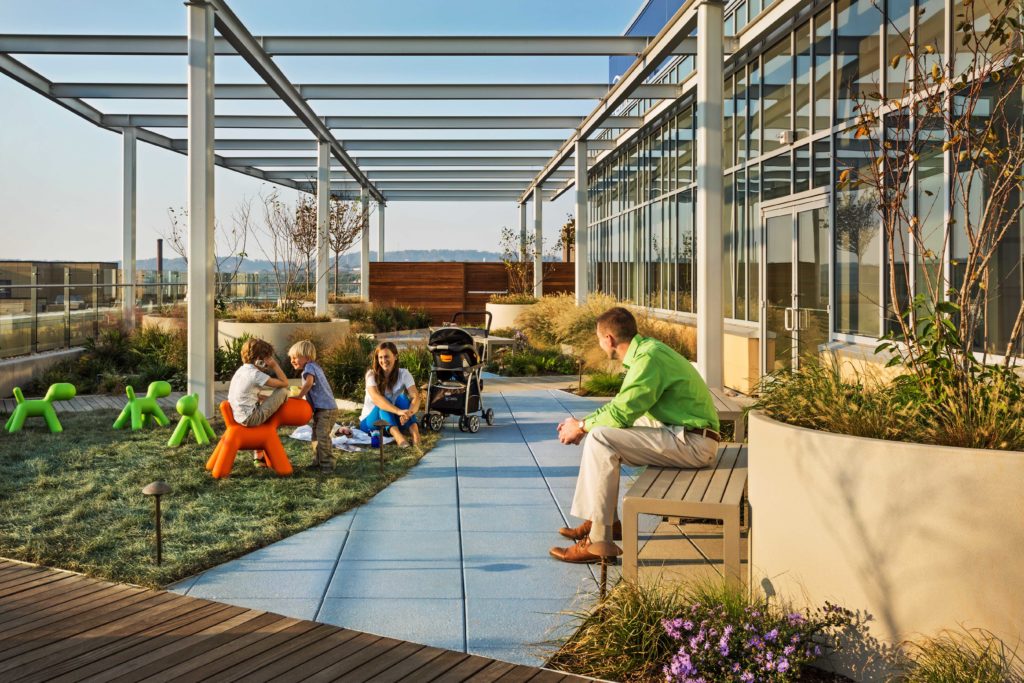
by Liz Switzer
Many architectural firms have built solid reputations by taking bold, innovative approaches to complex challenges in the built environment, yet few have been at it longer than Boston-based Shepley Bulfinch, a national practice that has been reinventing the status quo for over 150 years.
The world was first introduced to the firm in 1877 with the consecration of Boston’s Trinity Church, after Shepley Bulfinch founder Henry Hobson Richardson won an 1872 competition to design the structure. Following the Civil War, the country was ready to rebuild but what it also needed was a fresh vision, not just copies of Old-World forms. Richardson, known for reinterpreting European forms and styles, infused the Romanesque tradition with innovative ideas, creating something entirely new in the process: Richardsonian Romanesque architecture. The style was rapidly reflected in new public buildings across the country. The church, now a National Historic Landmark, established a pattern that remains characteristic of Shepley Bulfinch today.
HOLISTIC AT HEART
Today, Shepley Bulfinch produces forward-thinking buildings across several disciplines including education, libraries, civic and mixed use, but its reputation is perhaps strongest in the healthcare sector. Always top of mind for the firm’s more than 70 architects is wellness in design, or considerations for human health and the impacts that design has on metrics such as occupant physical and emotional wellbeing, productivity, staff retention, recruitment, increased cognitive restoration, creativity and even happiness.
What also sets Shepley Bulfinch apart among the nation’s consistently top-ranked design organizations, according to firm principals, has long been an holistic approach to sustainability; bettering health and wellbeing for both humans and the environment.
The importance of design to wellbeing is supported by a substantial and growing body of knowledge that demonstrates how the built environment has considerable influence over our entire state; levels of fatigue, stress markers, cognitive function, learning rates, physiological and physical health and healing, noted Shepley Bulfinch principal, Sonja Bochart, who has authored such blogs as “The relationship between empathy and design” and “Creating joy through biophilic design.”
“My greatest intention as a designer is to inspire both human and ecological wellbeing for these essential places in which we work, play, live and heal,” Bochart said. “We have such an incredible opportunity and responsibility to help create these spaces of compassion, wellbeing and hope for our communities. Through creativity, connecting research to practice, biophilic design frameworks and regenerative systems-thinking, we can build the potential for our environments to thrive.”
The firm’s holistic approach is a philosophy that dates back to its first project in 1912, Boston Children’s Hospital (BCH).
FRESH FACADES
In meeting today’s demand for structures designed with wellness in mind, Shepley Bulfinch approaches design through the integration of biophilic design strategies, a focus on material health initiatives and facilitation of integrative design workshops that merge the concepts of sustainability, wellbeing and regenerative design. “We believe wholeheartedly in meet- ing and honoring our clients where they are at, and to co-creating a roadmap for aligning their project sustainability goals to meet their values, mission and to respond to specific project goals, site and community,” Bochart said. “Although the major green building certification programs are certainly helpful frameworks that many of our clients seek to pursue, we strive to think more organically and fully with our clients to elevate the outcome.”
Shepley Bulfinch architects go beyond conventional sustainability strategies to address issues like safety, healthy food production and access, social justice and diversity. A Sustainability Charter is created for each client, which becomes a document that ultimately acts as a litmus test for success. The charter outlines the vision, goals and measurable metrics to achieve those goals, the specifics of which are then tracked throughout the design and construction process.
“Creating a Sustainability Charter is a great first step, but finding a way to implement the goals identified in the charter is where projects can get tricky,” Bochart said. “Instituting an integrative design process increases the potential to meet or exceed these goals.”
PEDIATRIC MEDICAL PIONEERS
Today — more than a century after its first project — the firm is again partnering with BCH, ranked as the top pediatric hospital in the country by US News & World Report, on the largest expansion in the hospital’s long history with the new Hale Family Clinical Building, which broke ground in late 2017. At 595,000-square-feet, it will have 150 single-patient rooms, 28,000 square feet of new greenspace and 16 operating rooms.
The expansion not only presents Shepley Bulfinch architects with the challenge of designing for the future of pediatric medicine, it also requires a focus on resiliency, so the care facility can operate independently in the case of a catastrophic event. Architects are working with the hospital’s engineering team, life safety, logistics and emergency preparedness groups to develop functional priorities. As part of that process, they created a 40,000-square-foot “cardboard city” simulation to find new ways to improve patient and staff journeys.
The Hale Building will not only improve specialized care, it will address increased patient acuity and reimagine a streamlined perioperative platform with flexible and dedicated operating rooms that combine the hospital’s Heart Center services onto a single-floor platform that optimizes the patient experience, according to Shepley Bulfinch principal Uma Ramanathan.
Cardiac diagnostic and treatment spaces encourage collaboration while enhancing quality of care, and new green spaces provide tranquil places for patients and families to think, reflect and heal, Ramanathan added.
